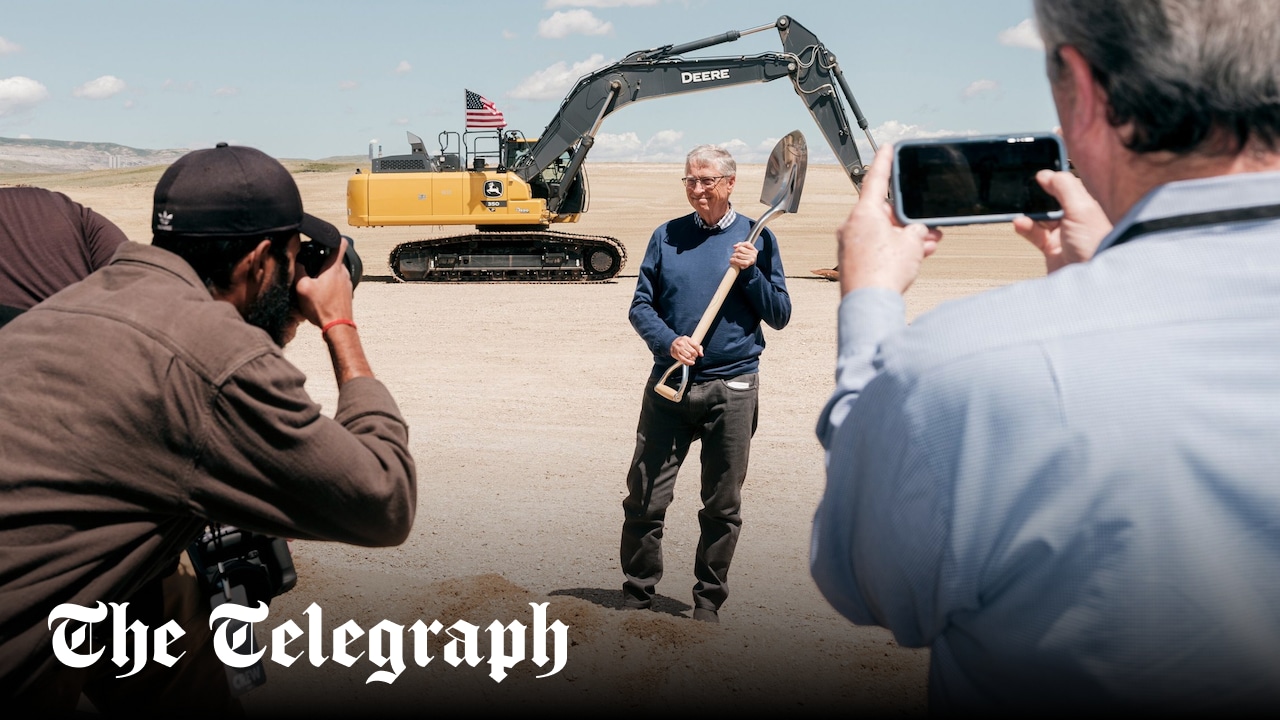“That said, none of these things are up and running right now, so the role we have to play is to demonstrate they can be delivered on time and on budget, and that they are economically viable,” she says.
The new generation of reactors are generally divided into so-called small modular reactors (SMRs) and next-generation, advanced modular reactors (AMRs).
SMRs – including all those being considered in the Government’s design competition – are based on existing water-cooled reactor technology, only miniaturised.
These have long been used in nuclear-powered submarines and are now being commercialised by major companies including Rolls-Royce.
Other “micro” versions of these reactors have also been developed, such as the 20 megawatt plants that Last Energy wants to build at a former coal power station in Bridgend, South Wales.
“We’re using proven technology that is absolutely understood and already utilised around the world,” says Michael Jenner, the boss of Last Energy UK.
‘The holy grail of nuclear’
AMRs will use different designs – and novel types of fuel. Many will also feature “passive safety” designs that, it is claimed, make it impossible for them to suffer meltdowns.
“We’ve designed reactors that are 100pc safe,” Mr Ghaffarian, who founded X-Energy in 2009, told Forbes in an interview last year.
“If there’s a tsunami, an earthquake … or a plane crashes into it, they can never go super-critical. And because of that, you can have them in the middle of cities, or anywhere.”
X-Energy’s reactor will be helium-cooled and use so-called Triso fuel particles.
Short for tri-structural isotropic, these “pebbles” look like metallic-coloured billiard balls but have been described as “the most robust nuclear fuel on Earth” by the US Department of Energy.
They are made from poppy-seed sized pieces of uranium, encased in layers of tough carbon-based and ceramic materials that keep radioactive material trapped inside.
This makes them tough enough to handle temperatures of up to 1600C, according to a 2015 Cambridge University paper. (The upper melting point of stainless steel is just over 1,500C.)
Mr Ghaffarian describes the company’s Triso-based design as “the holy grail in nuclear”.
Using these pebbles, X-Energy’s reactors will each generate about 80MW (megawatts) of power – or 320MW in “four packs” – and produce steam at a temperature of 565C.
In Texas, they are set to be used by Dow Chemical at the company’s Seadrift complex, where a variety of plastics are made, along with glycols for bottles and oxide derivatives used in beauty products.
It is one example of how mini-nuclear plants could help to decarbonise parts of the economy that might otherwise be extremely difficult or expensive to serve with renewables or hydrogen.
Triso is also the foundational technology that underpins Gates’s Terrapower and Google’s partner Kairos Power, with the former opting to use liquid sodium as a coolant and the latter using molten salt.
For now, the race is on to bring the first working reactor to market. More than 70 projects have been awarded some kind of seed funding by the US government.
Terrapower’s Wyoming plant is among them, with Gates and his investors having agreed to match $2bn (£1.6) provided to them by taxpayers.
The plant is envisaged as the first of many, with efficiencies of scale then set to bring the price of generation to parity with natural gas. In Europe, this is currently around €40 (£33.35) per megawatt hour.
“I think they will reshape the industry,” says Mr Nelson of the new crop of start-ups. “The tech companies are so profoundly rich and their futures are so constrained by this problem that they’re going to have room for multiple bets.”
